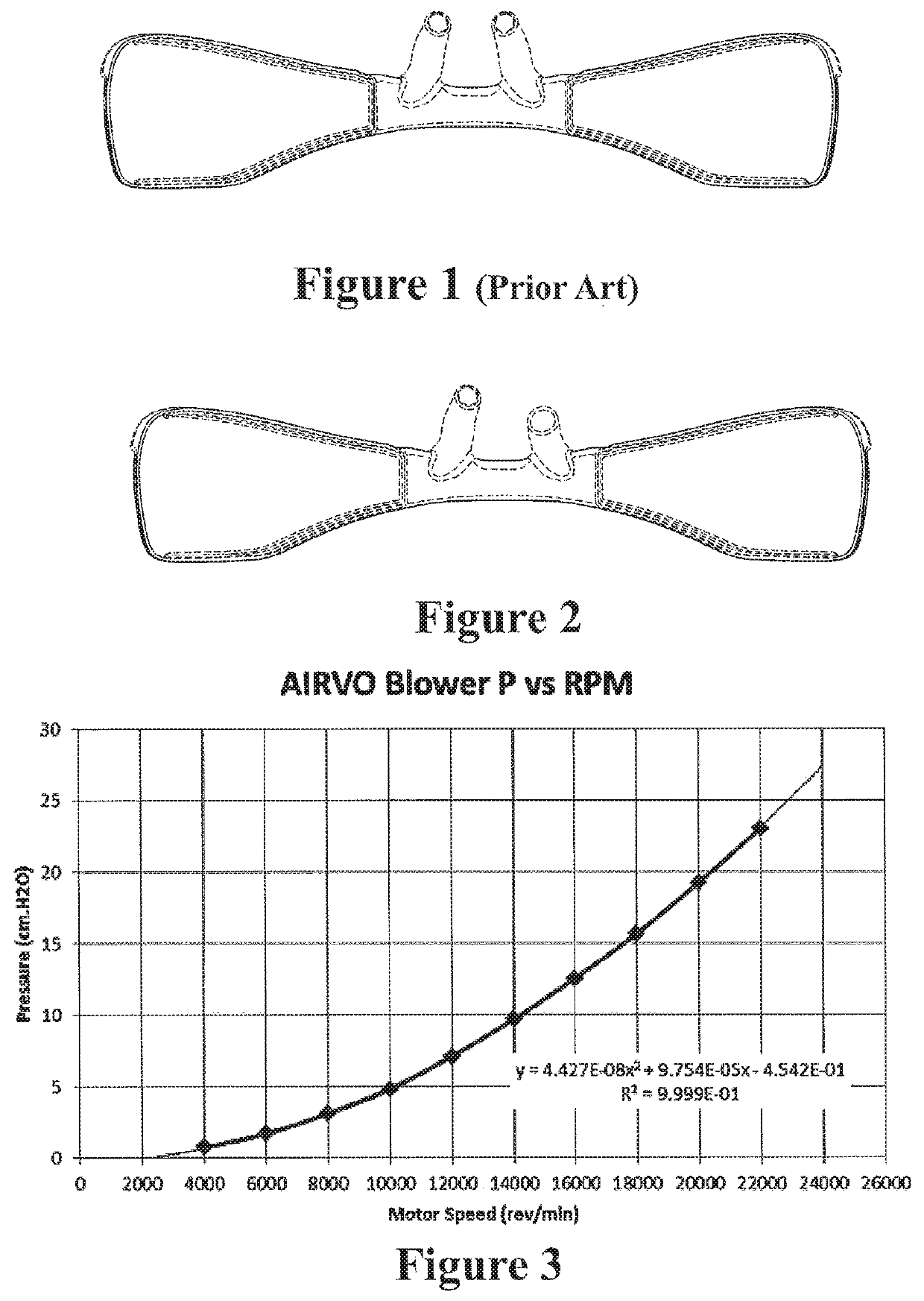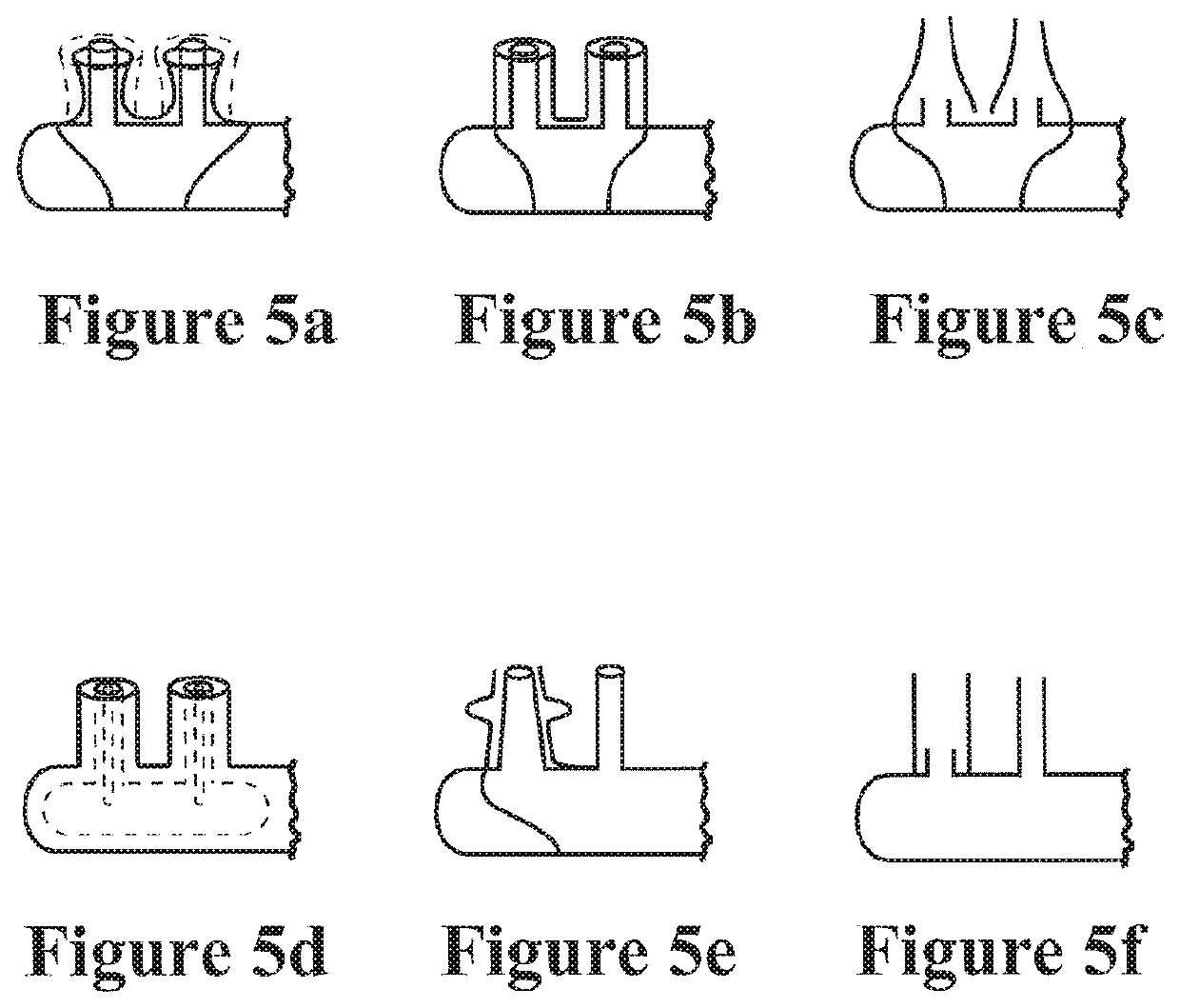Asymmetrical nasal delivery elements and fittings for nasal interfaces
a technology of nasal interface and delivery element, which is applied in the field of nasal interface, can solve the problems of difficult to optimise the clearance of dead space, unsatisfactory levels, and unsatisfactory levels of static pressure for child and infant prongs, so as to improve the ventilation of a subject, reduce the volume of anatomical dead space, and improve the effect of breathing
- Summary
- Abstract
- Description
- Claims
- Application Information
AI Technical Summary
Benefits of technology
Problems solved by technology
Method used
Image
Examples
first embodiment
Nasal Cannula—First Embodiment
FIGS. 15 to 19 show a nasal cannula 2000 useful herein in detail, which is also described in published international application WO2012 / 053910, which is hereby incorporated by reference in its entirety. Nasal cannula arrangement 2000 comprises at least one nasal prong 2001, modified as described above, the or each prong 2001 having a gas outlet 2002 adapted to be inserted into a user's nare (or nares) and a gas inlet 2003 fluidly connected to the gas outlet 2001. The at least one nasal prong 2001 comprises a backing 2004, the hacking 2004 configured to rest on a user's face, and where a lip 2005 extends about at least a part of the perimeter of a rear surface 2006 of the backing 2004. The rear surface 2004 is configured for receiving or retaining a user interface patch 2007. In use, the user interface patch 2007 may be releasably attachable or connectable to, or with, a dermal patch 2008 that is or can be affixed to a user's face.
As shown by FIGS. 16 an...
second embodiment
Nasal Cannula—Second Embodiment
A patient interface useful herein is shown in 20 to 23, and is described in unpublished international application PCT / NZ2014 / 000082, which is hereby incorporated by reference in its entirety.
Referring to FIGS. 20 to 23, the nasal prongs 111 and 112 are curved to extend into the patient's nares in use and to provides smooth flow path for gases to flow through, and are modified to be asymmetric, as described above. The inner surfaces of the prongs 111 and 112 may be contoured to reduce noise. The bases of the prongs 111 and 112 may include curves surfaces to provide for smoother gases flow. This may reduce the noise level during operation.
In some configurations, pads may be mounted around the base of the prongs to reduce noise. The pad may be a foam material or a mouldable material that generally conforms to the patient's nose anatomy. Soft cushions or pillows may alternatively be provided.
The nasal prongs 111 and 112 are substantially hollow and substan...
PUM
 Login to View More
Login to View More Abstract
Description
Claims
Application Information
 Login to View More
Login to View More - R&D
- Intellectual Property
- Life Sciences
- Materials
- Tech Scout
- Unparalleled Data Quality
- Higher Quality Content
- 60% Fewer Hallucinations
Browse by: Latest US Patents, China's latest patents, Technical Efficacy Thesaurus, Application Domain, Technology Topic, Popular Technical Reports.
© 2025 PatSnap. All rights reserved.Legal|Privacy policy|Modern Slavery Act Transparency Statement|Sitemap|About US| Contact US: help@patsnap.com



